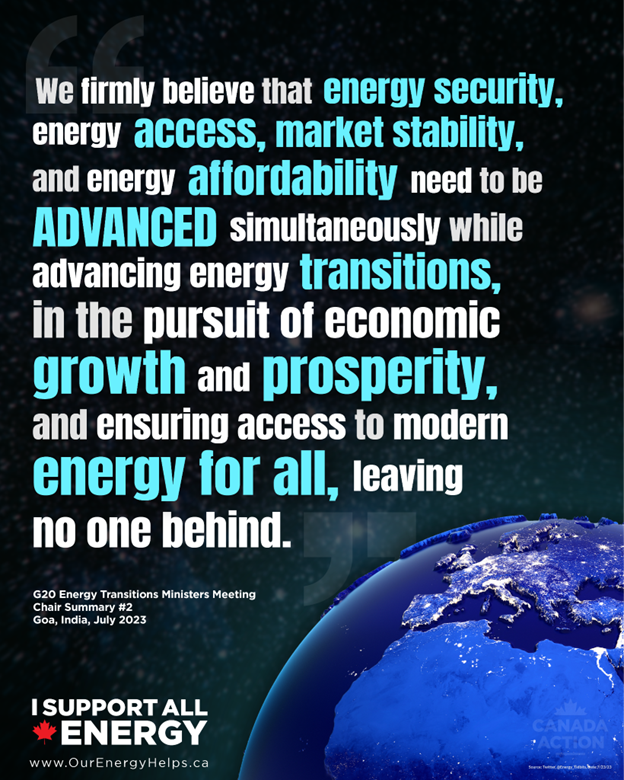
Will Canadian-made liquefied natural gas (LNG) help reduce global emissions? The following studies show that our world-class, low-emission LNG exports could have a massive positive impact via coal-to-gas switching in Asia.
Study #1 – Canadian Chamber of Commerce – March 2023
Canada and Global Energy Security: The Role of Natural Gas in a Lower Carbon Future

The Canadian Chamber of Commerce says that regardless of whether Canada “leaves its natural gas in the ground,” other countries will not produce or consume less energy. Doing so could worsen global emissions by making way for dirtier sources and suppliers.
The report highlights that, according to research by IHS Markit, switching just 20 per cent of Asia’s many coal-fired power plants to natural gas would reduce global CO2 emissions by an estimated 680 megatonnes (MT).
To put that into perspective, Canada’s annual emissions are 672 MT. In other words, exporting low-emission, Canadian-made LNG to Asia to replace coal power plants could “save a Canada” in emissions, while switching 40% would “save two Canadas,” and so on and so forth.
Study #2 – Journal of Cleaner Production – June 2020
Greenhouse-gas emissions of Canadian liquefied natural gas for use in China: Comparison and synthesis of three independent life cycle assessments

This paper says that LNG is a promising alternative to coal to reduce greenhouse gases (GHGs) and particulate emissions from power, industry and heating in China.
The study includes three life-cycle assessments (LCAs) of switching coal-to-gas for power and heat generation in the world’s second largest economy, performed by independent research groups from Stanford University, the University of British Columbia, and the University of Calgary.
In conclusion, the researchers found that substituting Canadian LNG in China for power and heat generation could accomplish a 34-62% reduction in carbon dioxide (CO2) emissions per unit of electricity generated.
Study #3 – Environmental Science & Technology – January 2018
Country-level Life Cycle Assessment of Greenhouse Gas Emissions from Liquefied Natural Gas Trade for Electricity Generation

This academic study set out to determine the net impact of LNG on GHG emissions for electricity generation through LCAs that accounted for transportation distances of importing/exporting countries, country-level infrastructure in importing countries, and the fuel sources displaced.
Utilizing three different scenarios for five countries in the Asia-Pacific region (China, India, Japan, South Korea, Taiwan), the study showed significant GHG emission reductions can be achieved in China, India and Taiwan. Furthermore, less significant GHG reductions can be achieved in South Korea and Japan.
Overall, the study results (Table 2) suggest there is a significant net environmental benefit when important Canadian LNG for electricity generation in the Asia-Pacific region.
The Results Are In…
Exporting Canadian LNG to Asia is perhaps the largest contribution our country can make to global emission reduction efforts at present.
The three studies above clearly show that significant climate action that could be taken if we could get more of our sustainably produced LNG to Asian buyers.
If you support global climate action, it is clear that you should also support Canadian LNG exports!
Share This:




